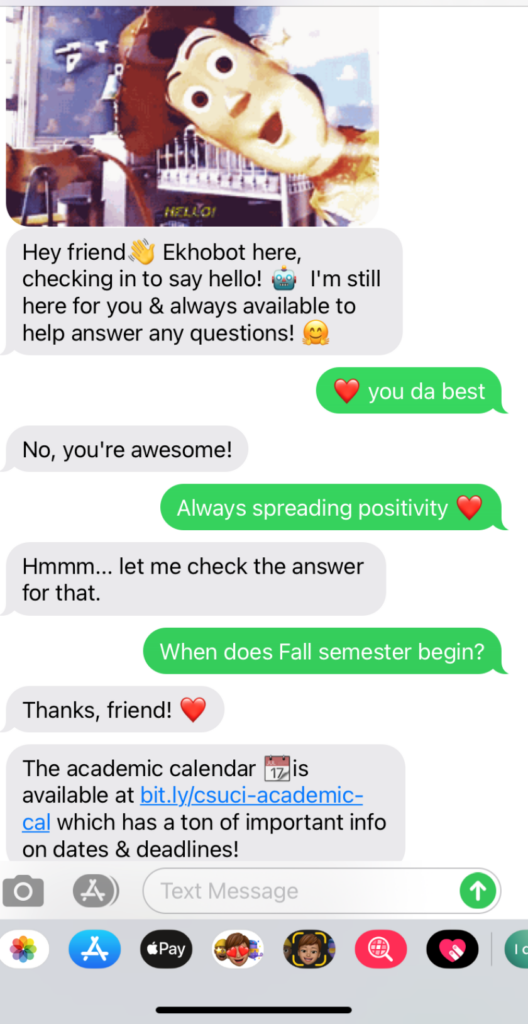A Bubbling Human Experience
In a world so heavily reliant on technology, it is important to maintain human connections. Emotional intelligence (EQ) is a growing form of technology that designs products based on humanity. The term “Emotional Intelligence” was developed as a psychological theory in the 1990s by Peter Salovey and John Mayer. The term is recognized by five characteristics:
- Self-awareness: recognizing and understanding your emotions, and how they affect others
- Self-regulation: controlling your impulse and moods, especially to pause and think before acting
- Internal motivation: being driven by something other than external rewards like money
- Empathy: understanding how other people feel
- Social skills: knowing how to build and manage good relationships
When companies utilize the power of EQ, they are capable of holding a competitive edge, produced by being more creative, having higher productivity and employee engagement, holding stronger customer experience, higher levels of customer loyalty, advocacy, and profitability. Organizations that lack EQ tend to face significant consequences such as low productivity, lukewarm innovation, and an uninspired workforce.
Companies like Lexus are utilizing the strengths of EQ in their products. Knowing how Americans bond with their cars, one of their latest models illustrates how the company infuses EQ in its design. They demonstrate an emotional understanding of their customers by achieving high levels of design and customer experience. Features such as comforting ambient lighting and climate control systems that sense the surface temperatures of the passengers are included in some packages. This, in turn, strengthens a bond with customers at a human level.

Fear of Technology
Experts have predicted that the utilization of AI at a larger scale will add as much as $15.7 trillion to the global economy by 2030. There is also the fear that humans will be replaced by intelligent machines, as this is already happening in manufacturing, service delivery, recruitment, and the financial industry. This has unfortunately led to humans working at lower-paying jobs or remaining unemployed.
Machines have evolved enough to replace the work of the human mind and body, and some AI is now advanced enough to be superior to humans in many tasks. AI has the capability to identify patterns that optimize trends relevant to the job, while never getting tired as long as it is fed data. Although, this technology does not yet replicate a human’s ability to imagine, anticipate, feel, and judge changing situations.
In order to successfully integrate emotional and artificial intelligence, it is important to anticipate what AI and EQ means in relationships to how humans think and act, and work to integrate the new technologies ambitiously and strategically into organizations.
Billy Chat

An interactive, emotionally tool, Billy chat is a robot that uses AI to text. Billy and other “chatbots” were launched at California State University campuses in 2019 to help students stay on track to graduate by providing them updates and answering questions they have. Following the COVID-19 pandemic, Billy evolved into more of a support-system for the students, rather than a piece of technology to answer university related questions. Billy blurred the lines between artificial and real. Other bots, such as “CougarBot” and “Csunny” were also developed on different campuses, inspired by the school’s mascots.

Elizabeth Adams, associate vice principal of undergraduate studies at Cal State Northridge obtained a grant to develop bots with the aim of helping students succeed, especially the first-time freshman and new transfer students. These bots typically function by planning out “campaigns” to reach students via text. They provide information such as reminders about deadlines, tips on securing financial aid, and info about support services. The bots are programmed with a knowledge base to respond to hundreds of questions, and when they face a question they do not know, they reach out to a human responder.
Students vent to bots like Billy, because they are not embarrassed. The bots provide timely responses, with a casual tone, using lots of emojis, gifs, and memes. As the pandemic raged on, students often talked to Billy about their struggles with social distancing, having COVID-19, missing their friends and family, and other personal issues they were having. Engagement with the bots have been very high, with more than 90% of the students passively or actively opting in.
AI Connections
Given the prevalence of AI in our modern society, companies are still trying to hold onto the human experience. Rather than creating a divide between people and technology, we see a connection trying to be forged. As vehicles are creating cars capable of bonding with their humans and colleges are developing emotional support chatbots for their students, emotional intelligence is making its way across many different industries that hope to create harmony between people and AI.
Sources
https://www.technologyreview.com/2021/03/09/1020470/driving-innovation-with-emotional-intelligence/
https://hbr.org/2021/03/ai-should-augment-human-intelligence-not-replace-it




